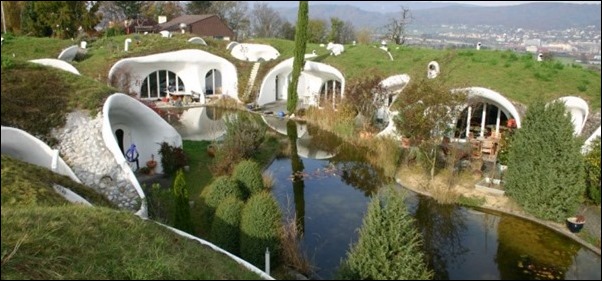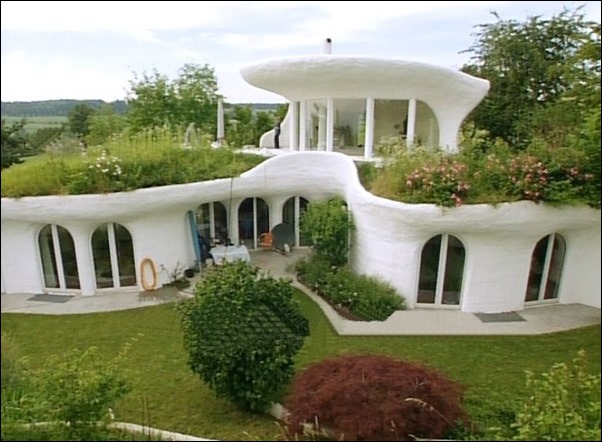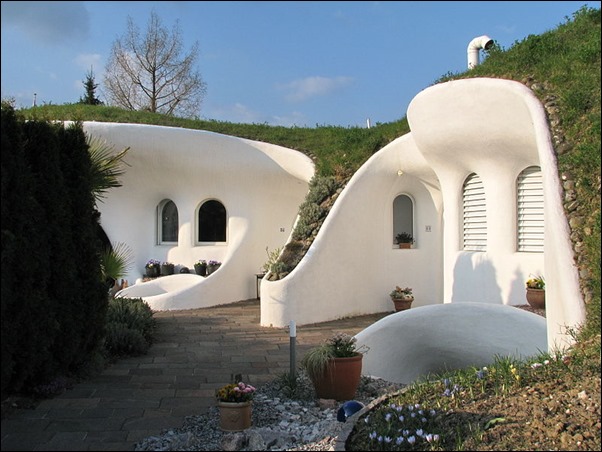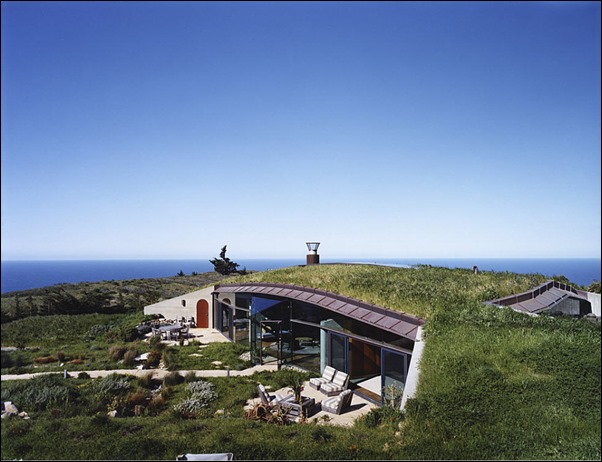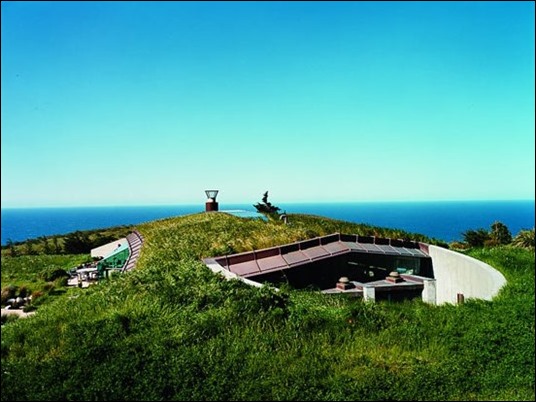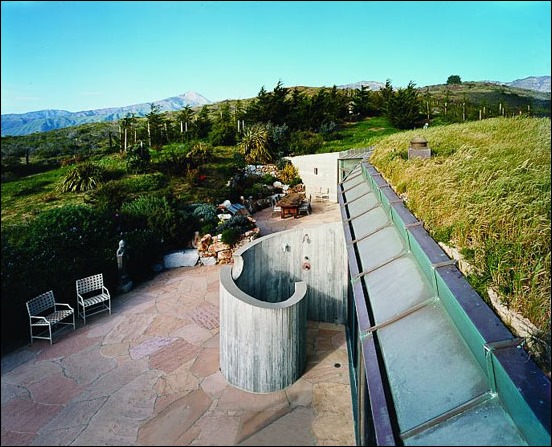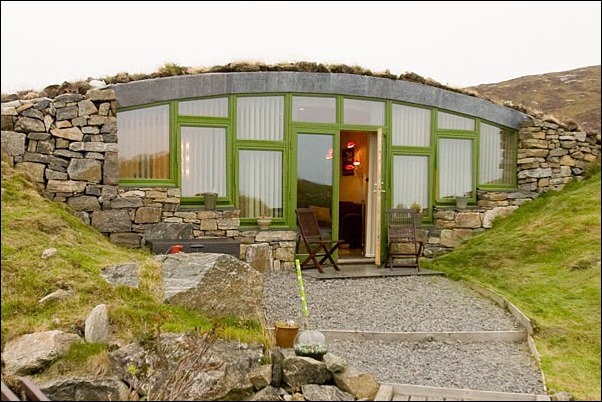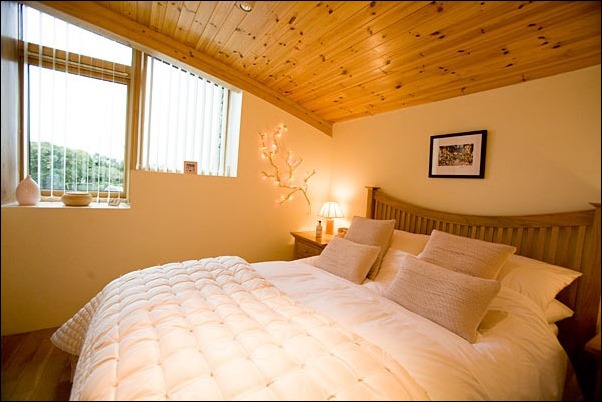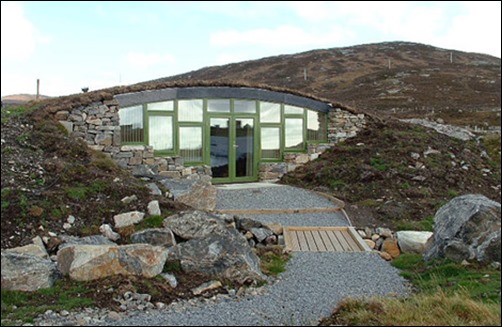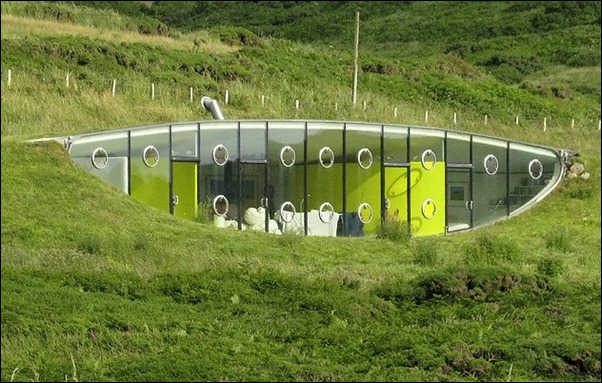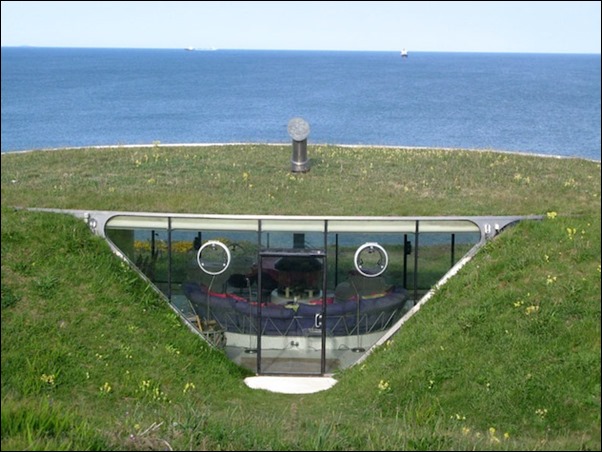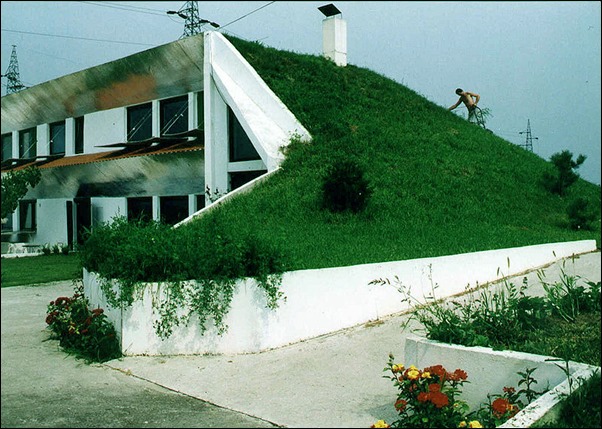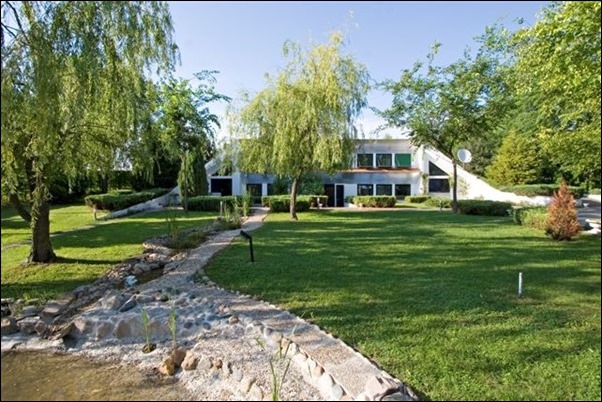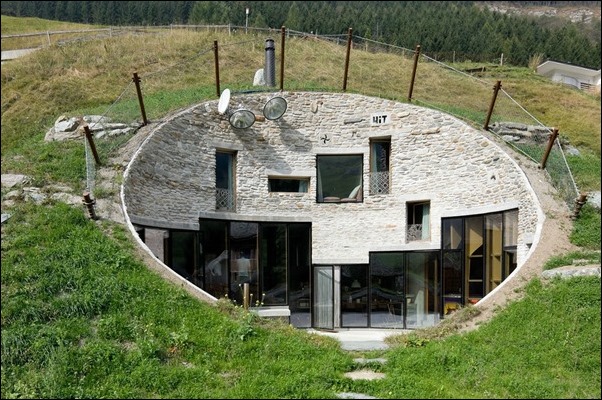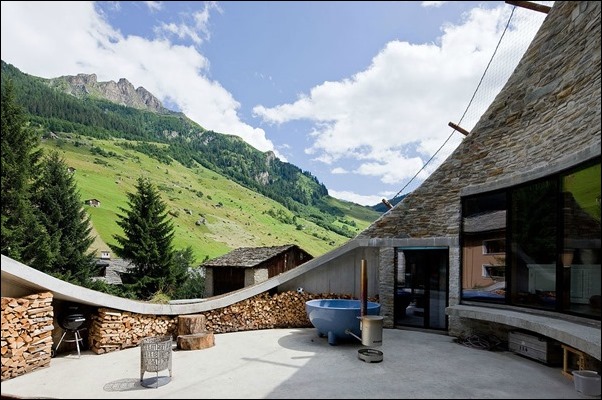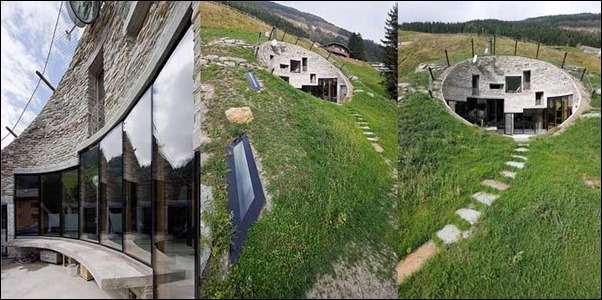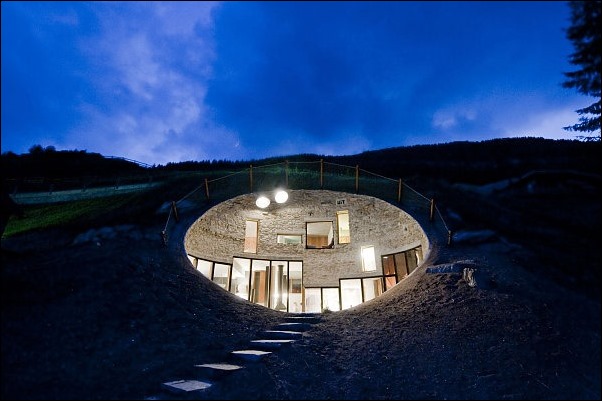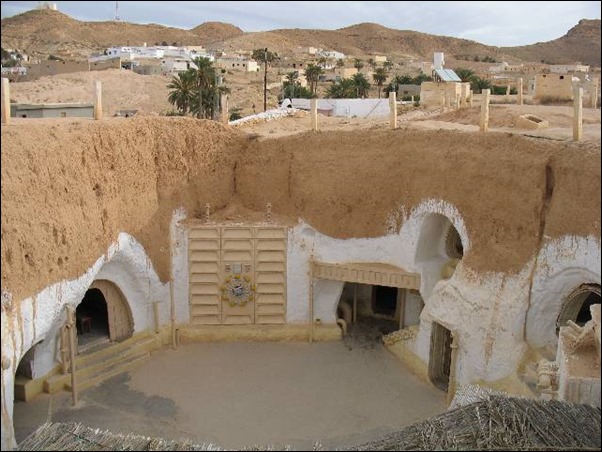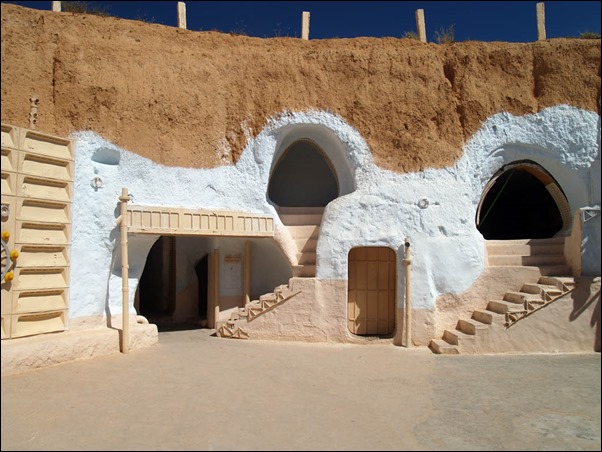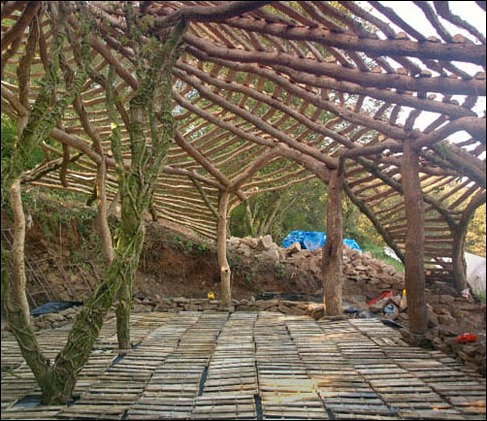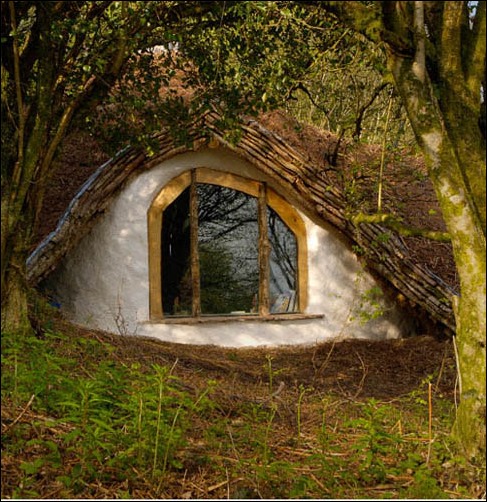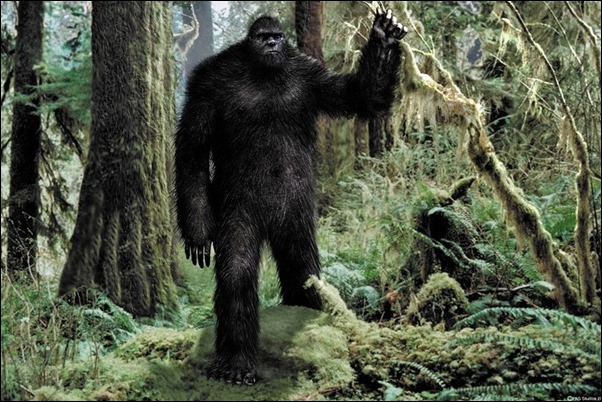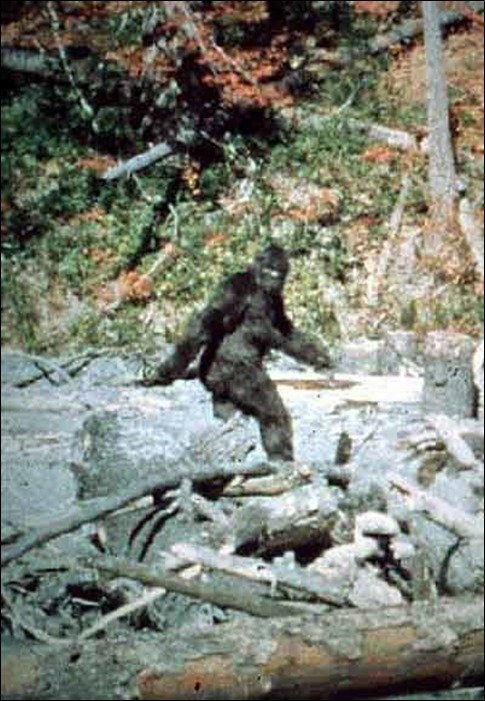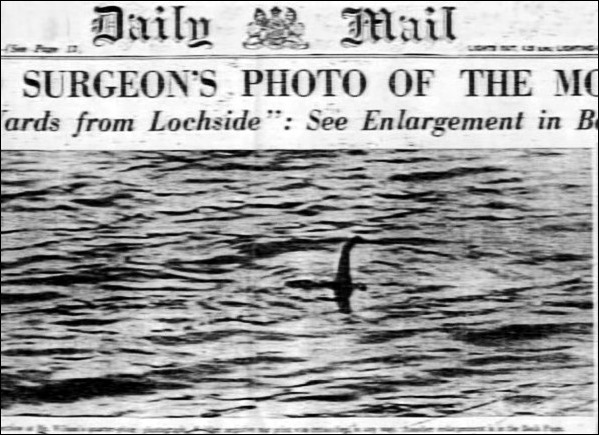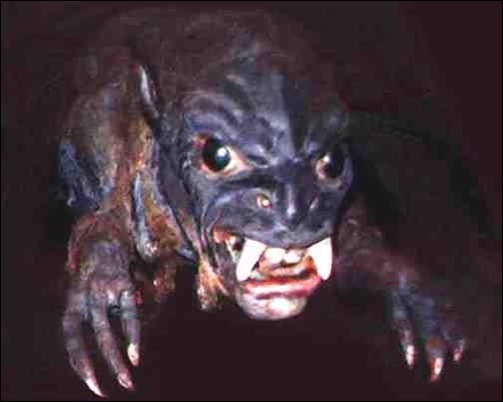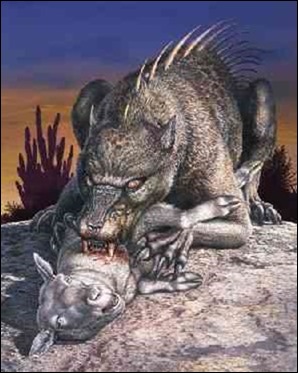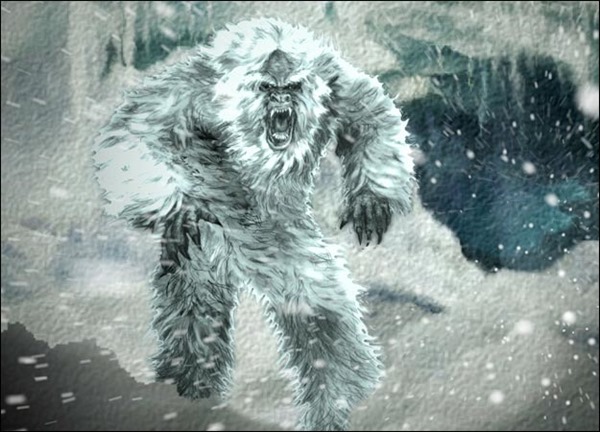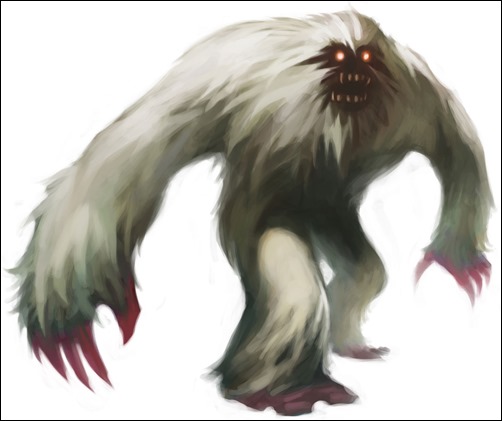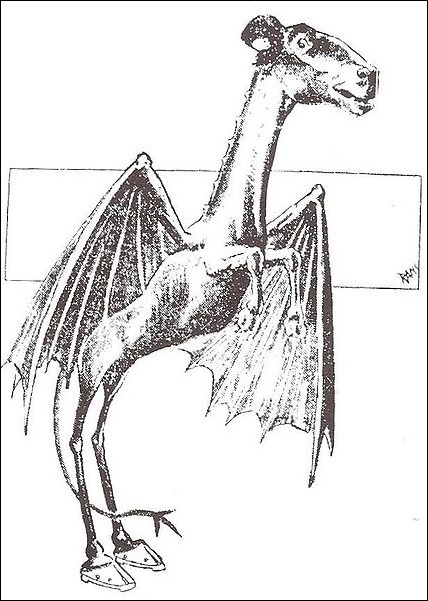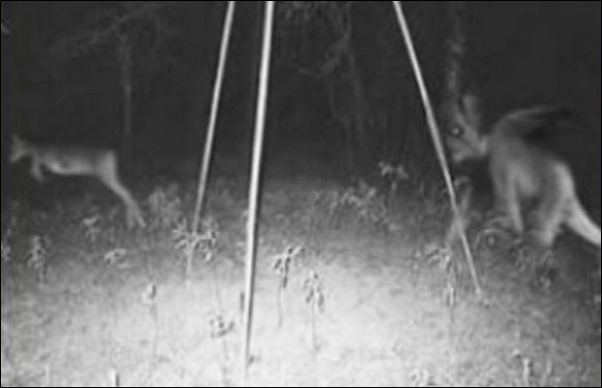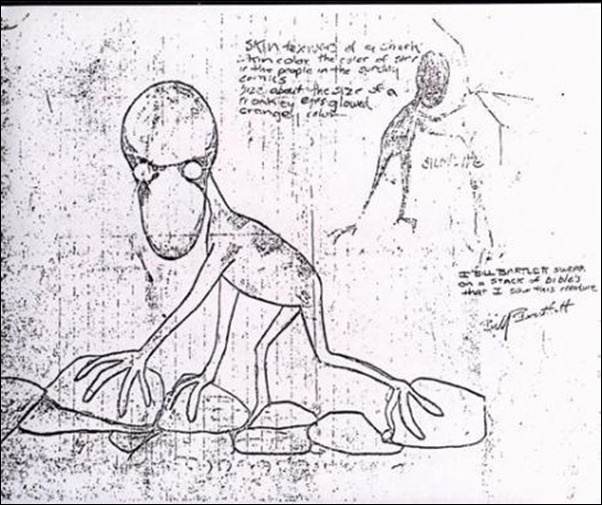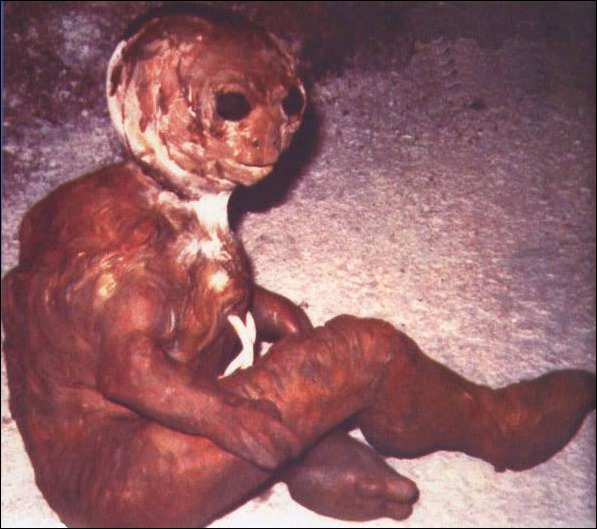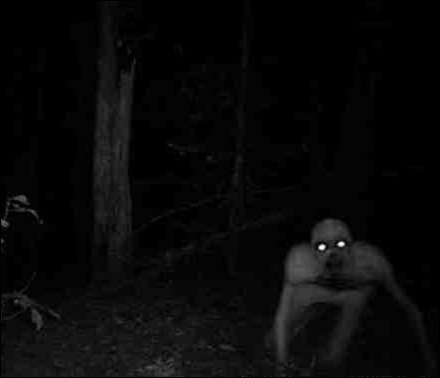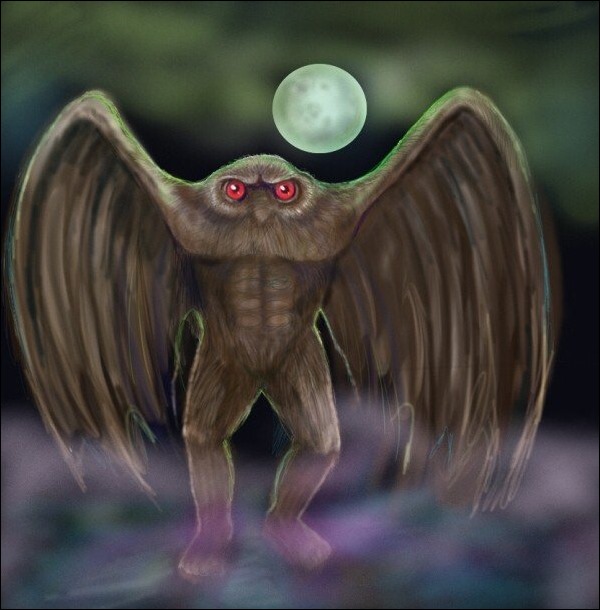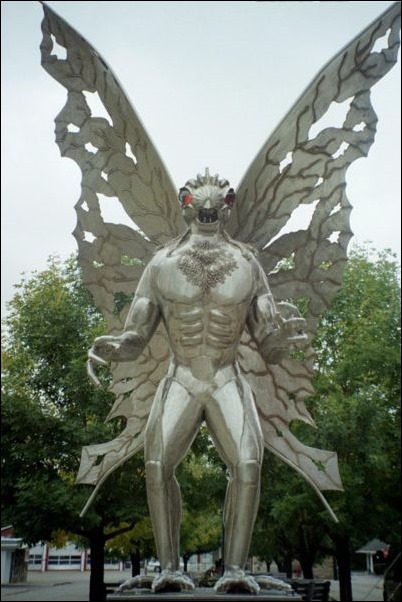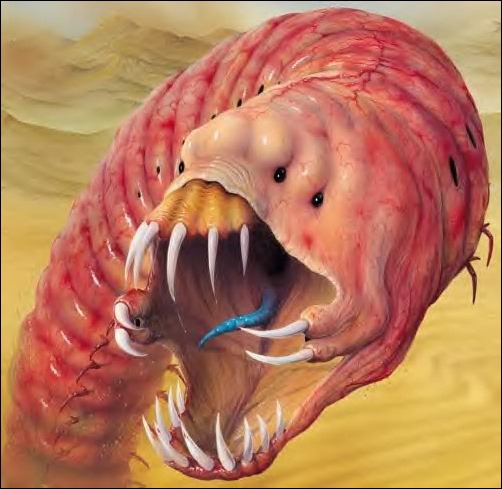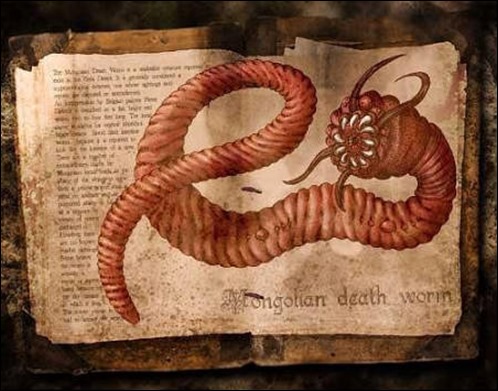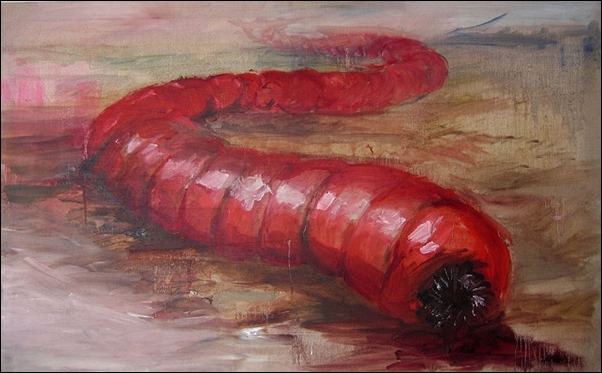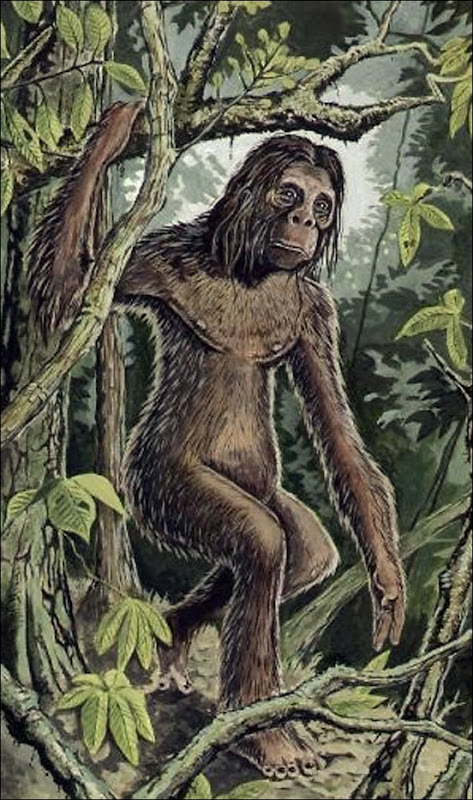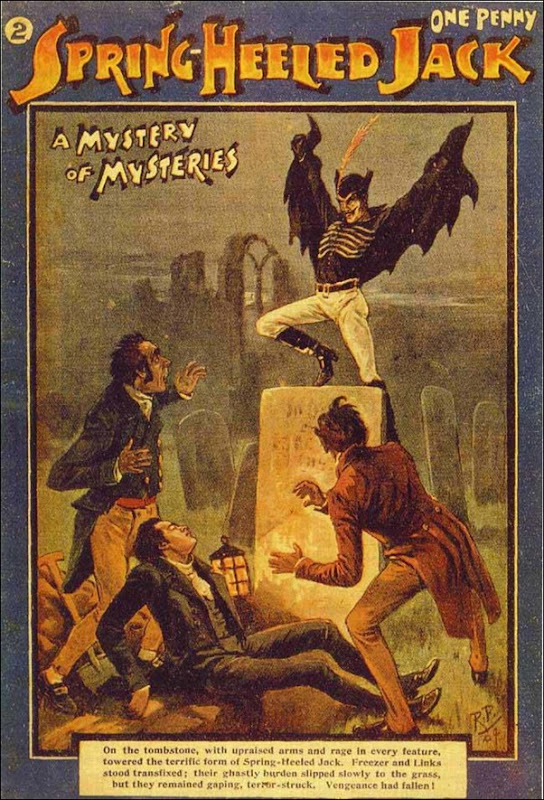An earth house (also known as an earth berm or an earth sheltered home) is an architectural style characterized by the use of natural terrain to help form the walls of a house. An earth house is usually set partially into the ground and covered with thin growth. Modern earth houses are built with concrete walls and insulation. Earth houses are some of the most energy efficient.
Earth House Estate Lättenstrasse, Switzerland
Earth House Estate Lättenstrasse is a project designed by Peter Vetsch, located in Dietikon, Switzerland.
This settlement finds itself in contrast to the surrounding of traditional single houses. To the south of the lot, there is free agricultural land. The earth- covered houses are grouped centered around a small artificial lake with the entrance well hidden and integrated at the side of the settlement. That not just serves the completion of the form, but also guarantees the secondary access of the particular houses through the subterranean parking lot.
The residential settlement consists of nine houses, three 3 bedroom, a 4 bedroom, a 5 bedroom, three 6 bedroom and a 7 bedroom house. The daytime areas are situated towards the south, the nighttime area towards the north. In the middle, you find the bathrooms and the connecting stairs to the basement. All the bathrooms get natural light through rooftop windows. Situated on both lateral sides of the houses are outdoor living spaces divided through the remainings of the rising of the building. The basement, as well as the parking lot is built with conventional techniques, not so the ground floor, which is constructed with the typical earthhome construction principle of sprayed concrete. The isolation consists of recycled glass, an absolute environment friendly product. The water protection is added directly on the sprayed concrete. On top of the isolation is a protective layer with natural earth, which can be used to grow grass or plants on the rooftop. [link]
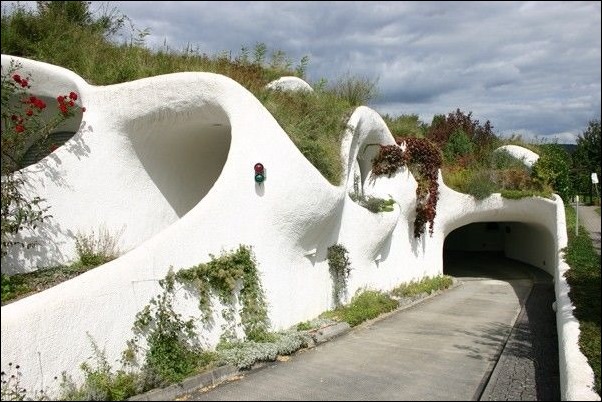 images source: VΕΤSCΗ ΑRCΗΙΤΕΚΤUR
images source: VΕΤSCΗ ΑRCΗΙΤΕΚΤUR
Cooper Point House, United States
Mickey Muennig has been building green-roof architecture for the past 30 years. One of his latest eco friendly buildings is the one on copper point where the roof is covered in a blanket of thick wild grass. He is a long time practitioner in eco-architecture and still remains an unsung hero of the green movement even at the age of 74. The copper point house is built into the landscape and has concrete walls on two sides with all-glass walls in between. The roof above is a continuation of the landscape which has thick covering of grass making the house more fireproof and also providing insulation at the same time. It is an ultra efficient house sporting solar panels grids.
The total area of the house is 2745 square feet and has 3 bedrooms. The interiors sports Douglas fir beams with a large skylight to let in natural light. Well this is what they mean by living in harmony with nature. [link]
Hebridean Earth House, Scotland
On the picturesque Scottish Isle of South Uist lies this modern version of a Stone Age building. The rental cottage is secluded and underground, yet also seems very modern. Its earthen top gives it a low profile and a cozy appearance, while the huge modern windows on the front of the building give it a decidedly contemporary feeling. [link]
The design of the house incorporates solatubes which ensure that it is bright and sunny, not dark as a cave, the name by which some people call the house.
Malator Underground House, Wales
Malator blends so seamlessly with Wales’ lush landscape that you can easily miss it if you’re not looking for it. Little more than the front window of the home reveals its location, as the roof is entirely covered in local grasses and the bulk of the home closely imitates the swelling hills all around it. [link]
Self-Heating Ecological House, Serbia
Veljko Milkovic is an inventor and, as such, has created designs for an eco-house along with many other energy-saving devices. His self-heating eco-house – or Eko Kuca - building concept saves up to 85 percent on heating, 100 percent on cooling, 30 percent on lighting and about 20 to 40 percent on building materials, based on monitoring.
Using passive solar design principles and earth-shelter techniques, he also employs reflective surfaces that unfold to capture and amplify solar gain into the home through the glazing. Milkovic says this design achieves the highest energy savings with a minimum investment. The Eko Kuca is covered with a sod roof that sweeps up over the earth-bermed house to provide additional insulation for an energy-efficient envelope. [link]
Unique Buried Home, Switzerland
In a location as picturesque as Vals, Switzerland, it’s difficult to imagine any new construction that wouldn’t impose on the beautiful landscape. So when the rare opportunity was granted to construct a new dwelling just a stone’s throw away from the famed Vals thermal baths, it was of paramount importance to not disturb the tranquil site. Designed by the architects of SeArch and Christian Müller, this underground house exemplifies the notion that thoughtfully constructed buildings can live in harmony with their surrounding environs.
Situated in the Swiss village of Vals deep in the mountains, the house is almost undetectable. Set below ground, the concrete structure features a wide oval opening that one arrives at via a set of stones steps embedded in the steep incline. At the top of the stairs a central patio is surrounded by a wide spanning façade formed of large window openings, which provide luminous reflections of the Alpine vista on the opposite side of the narrow valley. [link]
Hotel Sidi Driss, Tunisia
The Hotel Sidi Driss in Matmata, Tunisia was used in 1976 as a filming location for Star Wars Episode IV: A New Hope in which it featured as the home of Luke Skywalker, his Aunt Beru Lars and Uncle Owen Lars on the planet Tatooine. The hotel is designed as a traditional Berber troglodyte underground building. It featured again in the 2002 prequel film Star Wars Episode II: Attack of the Clones.
One of Call of Duty 2's missions and multiplayer maps takes place in Matmâta as part of North African Campaign.
Matmâta is also set to star in the upcoming film La soif noire, an adaptation of the book from Swiss author Hans Ruesch starring Antonio Banderas and Freida Pinto.
How to build a cheap Earth House
Building a house is of course very expensive but you should know that you can build an earth house with little money.
A young couple in Wales with an annual income of just $10,000 built their own cheap earth house mostly out of materials from “a rubbish pile somewhere.”
The couple even have a website where they show us details of their plans, pictures and how you can really built an Earth House for under $5000.






